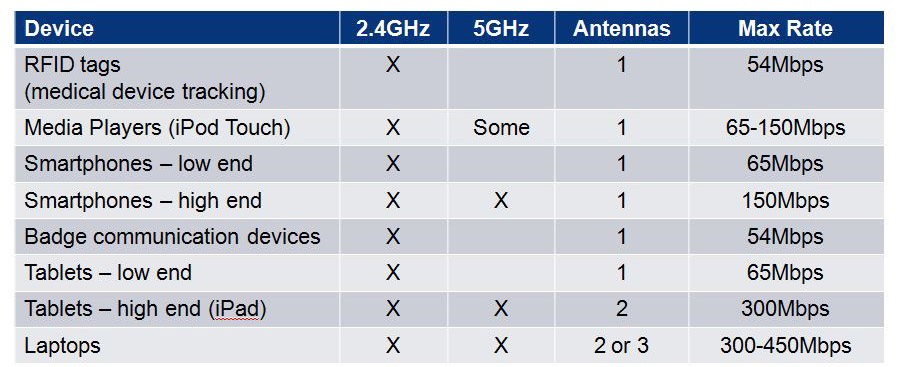The notion of going green is far from revolutionary. Organizations in both the public and private sectors have been making strides toward green office environments for nearly 2 decades. The goal of these organizations to ditch paper in favor of electronic files addresses a variety of concerns: environmental responsibility, storage, reliability, and accessibility, to name just a few. These are all worthy end-goals attractive to organizations across all verticals. This has become an especially frequent topic of discussion as the healthcare industry migrates to electronic medical records at a rapid pace. What is not discussed nearly as often, however, is the decidedly less glamorous infrastructure necessary to support going green, which is particularly challenging within a healthcare facility.
Paperless = Wi-Fi
While there are myriad components required to create a comprehensive green healthcare facility, arguably one of the most important components required to create a foundation for this goal is a robust Wi-Fi network. Going wireless is a prerequisite to going paperless. The latter is not possible without the former.
Many of the new devices that hospitals employ are wireless-only, with no wires to connect to the network via Ethernet or any other type of connection. The tablet has established itself as a key device that many healthcare professionals use to access medical records across disparate facilities, access information on prescription prices and pharmacy call-ins, as well as to refer patients to specialists. A plethora of other devices used in healthcare settings are wireless, including infusion pumps, patient monitoring systems, RF location tags, Wi-Fi–based VoIP (VoWi-Fi) phones and call badges, and many more.
By providing access to information on mobile devices wherever and whenever desired, healthcare organizations can begin to eliminate the reams of paper-based records that have been a mainstay in the industry for years. And beyond the savings on paper, by eliminating the wiring in the rooms, walls, risers, and wiring closets to connect all the devices and computers, going wireless can reduce the use of copper, steel, plastic, and other resources, which not only benefits the environment, but also results in meaningful cost savings.
Challenges
Moving to an all-wireless (or heavy wireless) environment does not come without its challenges. Delivering the rock-solid, reliable wireless service required in a healthcare setting requires proper design and assurance provisions. The variable RF characteristics of building materials, x-ray rooms, and equipment must be accounted for. Successful hospital Wi-Fi installations depend on an accurate design that accounts for these elements and ensures a ubiquitous, robust signal in all areas of service. The success of the deployment is contingent on an accurate accounting of all the elements that may influence the network’s quality.
Another key factor is the issue of interference from the many wireless devices within a hospital, both Wi-Fi and non-Wi-Fi. There are two standard spectrum bands in which Wi-Fi operates: 2.4 GHz and 5 GHz. The 5 GHz band provides much greater capacity and is much less prone to interference from other wireless networks, which is a key factor in hospitals. Successful Wi-Fi networks must ubiquitously support both bands in all locations of the facility.
In a hospital setting, the IT department must ensure that the wireless network can support high-performance mobility and roaming. This is especially important with doctors and nurses accessing electronic medical records at the bedside, or in the operating room, hallway, and any other location within the facility. Wireless nurse call systems and asset tracking systems must be able to communicate seamlessly in all locations. The wireless network must be designed to accommodate all these different applications, which all come with varying requirements.
Benefits
With the wide adoption of email, the paperless office is increasingly prevalent in the corporate world. This same transformation is in progress in the healthcare industry as well. What separates healthcare facilities is the speed at which they are able to complete this transition. Going wireless can be beneficial for the environment, and improves efficiency and maximizes the speed and quality of patient care. The potential benefits offered by a wireless healthcare facility are monumental. It helps practitioners do their jobs more effectively, and thereby improve patients’ experience within the healthcare facility.
However, attention must be paid to the fact that going wireless is more than just transitioning files into electronic form. There is a necessary infrastructure overhaul that must be undertaken first and managed correctly. Without proper attention to that infrastructure, the green healthcare facility will remain a pipe dream. 24×7
Bruce Miller is the vice president of product marketing at Xirrus, Thousand Oaks, Calif. For more information, contact [email protected].






